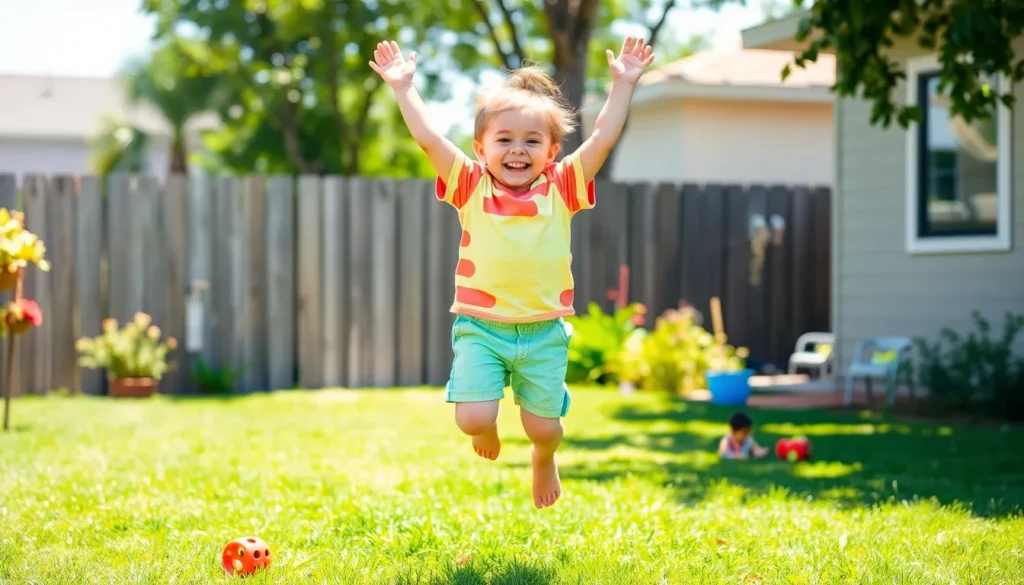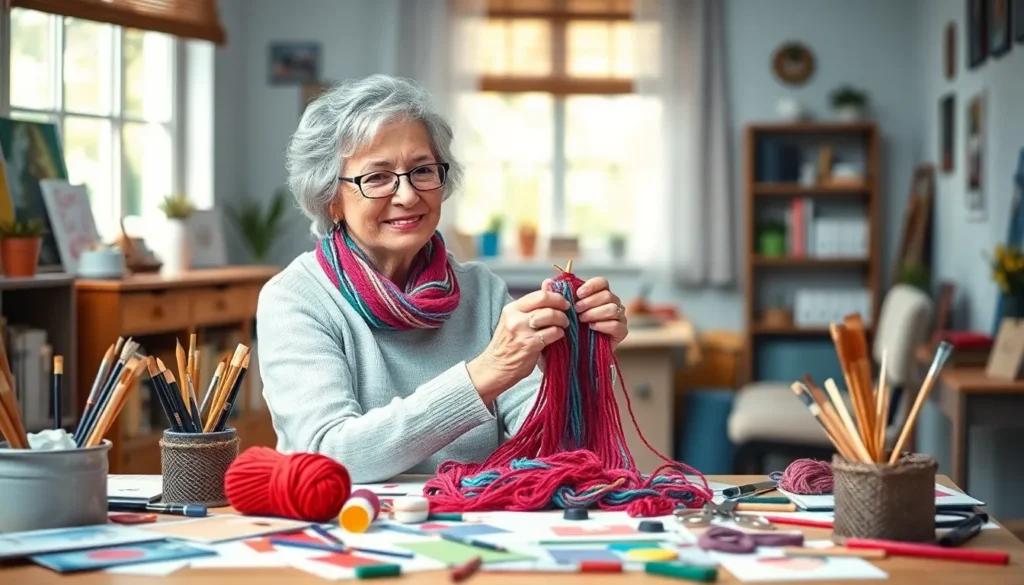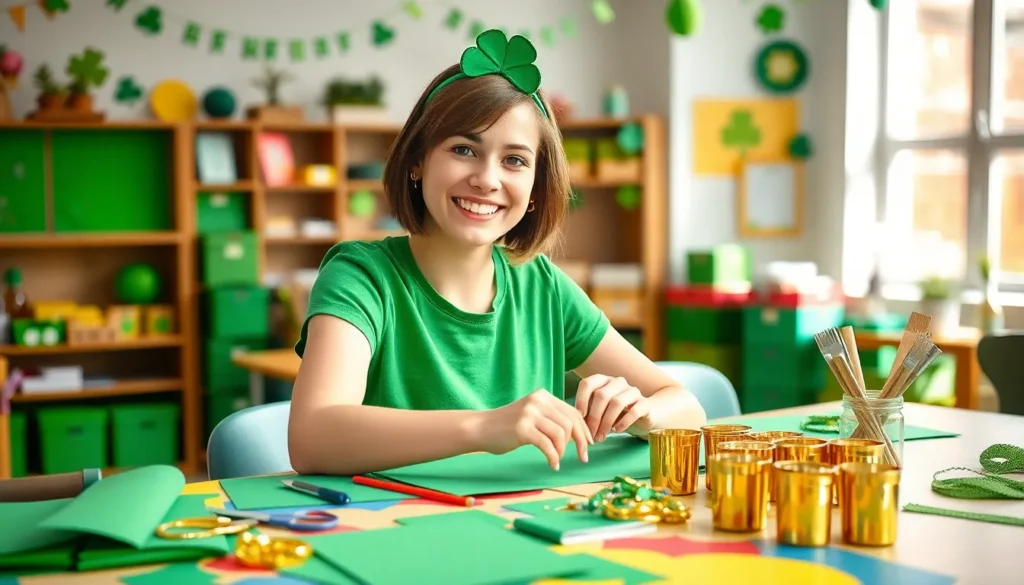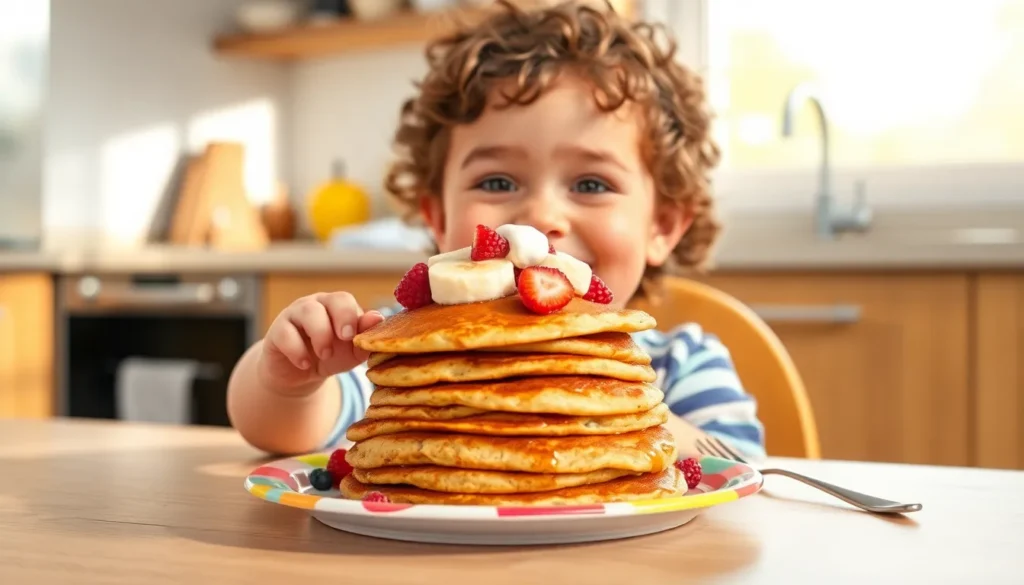Table of Contents
ToggleWatching a toddler discover the world is like witnessing a live-action comedy show. One moment they’re mastering the art of standing, and the next, they’re preparing for an Olympic-level leap. But when do these pint-sized acrobats actually learn to jump? Spoiler alert: it’s earlier than you might think!
Understanding Toddler Development
Toddler development involves crucial milestones. Motor skills significantly define a child’s growth during this stage.
Key Milestones in Motor Skills
Jumping marks a significant milestone in motor skills, typically occurring between 15 to 36 months. At around 18 months, toddlers often start doing small jumps. By age two, they can jump in place, showcasing stronger leg muscles. Children also begin jumping off low surfaces, highlighting improved coordination.
Physical Development Stages
Walking precedes jumping; most toddlers walk between 9 to 15 months. Emerging confidence in walking usually leads to attempts at jumping. As physical development progresses, skills like running and climbing also develop. Between 24 to 36 months, many toddlers exhibit increased balance and coordination, allowing for more complex jumping activities. Success in these stages often encourages further exploration of physical abilities.
When Do Toddlers Learn to Jump?

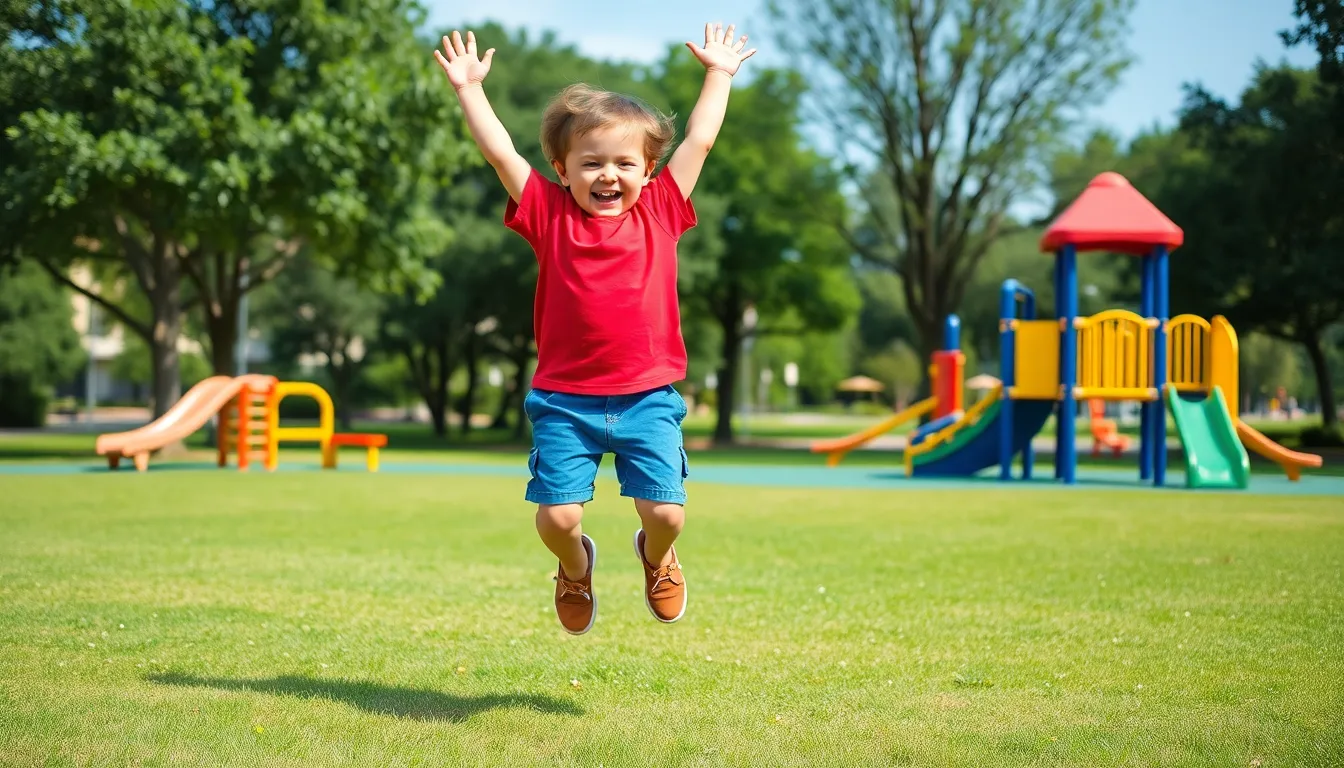
Jumping represents a key milestone in toddler development. Mastery typically occurs between 15 to 36 months.
Average Age Range
Small jumps often begin around 18 months. By 24 months, many toddlers can jump in place with both feet off the ground. Most children exhibit more advanced jumping skills, such as hopping, by age three. During this time, coordination and balance improve significantly, enhancing their ability to jump. Experts note variations in age, as some toddlers may reach jumping milestones earlier or later, depending on individual growth patterns.
Factors Influencing Jumping Ability
Several factors can impact a toddler’s ability to jump. Physical strength plays a crucial role; stronger leg muscles facilitate better jumping. Confidence also influences performance; toddlers more comfortable with their balance and coordination jump more readily. Environmental elements, such as space to practice and encouragement from caregivers, support skill development. Opportunities for play provide toddlers with the chance to explore jumping and other movement skills. Regular engagement in physical activities can enhance muscle development and overall coordination, leading to improved jumping abilities.
Types of Jumping Skills
Jumping skills develop progressively in toddlers. Mastery of these skills showcases their physical growth and coordination.
Two-Footed Jumping
Two-footed jumping involves jumping off both feet simultaneously. Typically, toddlers start this skill by 18 months. During this age, they initiate small jumps while exploring their environments. Jumping in place often occurs around age two, laying the foundation for more advanced movements. This skill promotes leg muscle development and balance. Encouragement from caregivers can enhance their confidence and willingness to try. Engaging in activities that incorporate games reinforces this skill effectively.
One-Footed Jumping
One-footed jumping emerges later, generally between ages two and three. This skill requires additional balance and strength compared to two-footed jumps. Toddlers may begin attempting to hop on one foot as they gain confidence. By age three, many children can demonstrate this ability, often during playful activities. Practicing one-footed jumps aids in enhancing coordination and leg strength. Caregivers should provide a safe space for exploration, facilitating practice through fun games. Encouraging toddlers to engage in activities that involve jumping on one foot fosters their overall motor skill development.
Encouraging Jumping in Toddlers
Fostering jumping skills in toddlers involves engaging activities and prioritizing safety. Caregivers can create a supportive environment that encourages physical exploration.
Fun Activities to Promote Jumping
Engaging in activities like jumping games strengthens leg muscles. Set up a mini trampoline for guided bouncing. Create obstacle courses with soft cushions to inspire jumping between sections. Play “ring-around-the-rosy” or similar games to blend fun with skill practice. Dancing and clapping while jumping also enhances coordination and rhythm. Squat jumps or jumping over small toys add excitement while reinforcing jumping skills. Regular participation improves confidence and supports physical growth, making jumping a joyful experience.
Safety Considerations
Prioritizing safety ensures a positive jumping experience for toddlers. Use soft surfaces like grass or foam mats for jumping activities. Always supervise jumping sessions to prevent accidents. Establish boundaries to define safe jumping spaces. Remove obstacles and sharp objects from play areas. Dress toddlers in non-slip footwear to enhance grip. Encourage gentle landings by teaching proper bending of the knees during jumps. Implement safety rules consistently to create an understanding of jumping risks. A secure environment nurtures skill development while maximizing fun.
